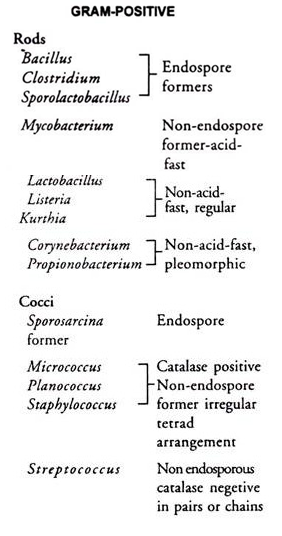In this article we will discuss about the principle, requirements and procedure for identification of unknown bacterium.
Principle:
For this the bacteria are first observed for morphological characters like size, shape motility, etc. and then separate them based on Gram staining into Gram-positive and Gram- negative ones. Further, the biochemical characters are observed.
Requirements:
1. Unknown bacterial cultures.
2. Various stains required for Gram staining, acid-fast staining, spores staining, capsule staining flagellar staining, etc. (given later in this chapter).
3. Phenol red.
4. Fermentation broths of sucrose, dextrose, lactose.
5. Litmus milk.
6. Gelatin tubes (deep).
7. SIM agar deep tubes.
8. MRVP broth.
9. Urea broth.
10. Trypticase nitrate broth
11. Trypticase soy agar slants.
12. Simmon’s citrate agar slants.
13. Starch agar plates.
14. Tributyrin agar plates.
Staining tray:
1. Reagents for detection of starch hydrolysis, indole, nitrates, etc.
2. Inoculating loops/needles.
3. Slides.
4. Bunsen flame.
5. Lens paper.
6. Immersion oil.
7. Microscope.
8. Glass marking pencil.
9. Agar plates.
10. Incubator.
Procedure:
1. Streak unknown cultures on agar plate, incubate one at 37°C and the other at room temperature for 24-48 hours in an inverted position.
2. Note the morphological characters of colonies from the end of the streak and record.
3. Prepare slides (smears), Gram stain and separate them.
4. Mount the organism and note shape, arrangement, size, spores, motility, etc. and record.
5. Observe cultural characters on trypticase soy agar plate like colony diameter, mode of growth, colour of colony, form of colony, colony elevated or not, margin of colony, etc.
6. On agar slants note: Mode of growth, form of growth, colour and consistency.
7. In broth note: Type of growth, pellicle formation; sediment formation, flocculence, etc.
8. Streak two trypticase soy agar slants, incubate at 37°C for 24 hours, store one in refrigerator (stock) and the other as working culture.
9. Perform following biochemicals after classifying them into Gram-positive and Gram-negative ones:
a. Carbohydrate fermentation:
(i) Phenol red sucrose broth.
(ii) Phenol red glucose broth.
(iii) Phenol red lactose broth.
b. Catalase activity-Trypticase soy agar slants.
c. Litmus milk reactions-Litmus milk.
d. Indole and H2S production-SIM medium.
e. Methyl red and Voges-Proskauer test- MR VP broth.
f. Nitrate reduction-Trypticase nitrate broth.
g. Citrate utilisation-Simmon’s citrate agar slant.
h. Ureas activity-Urea broth.
i. Hydrolysis of starch-Starch agar plate,
j. Hydrolysis of lipid-Tributyrin agar plate.
k. Hydrolysis of gelatin deep tube.
I. Oxidase test-Trypticase soy agar plates.
10. Incubate all inoculated plates and tubes at 37°C for 24-72 hours and note the results in a tabular form as Gram-positive and Gram-negative ones.


